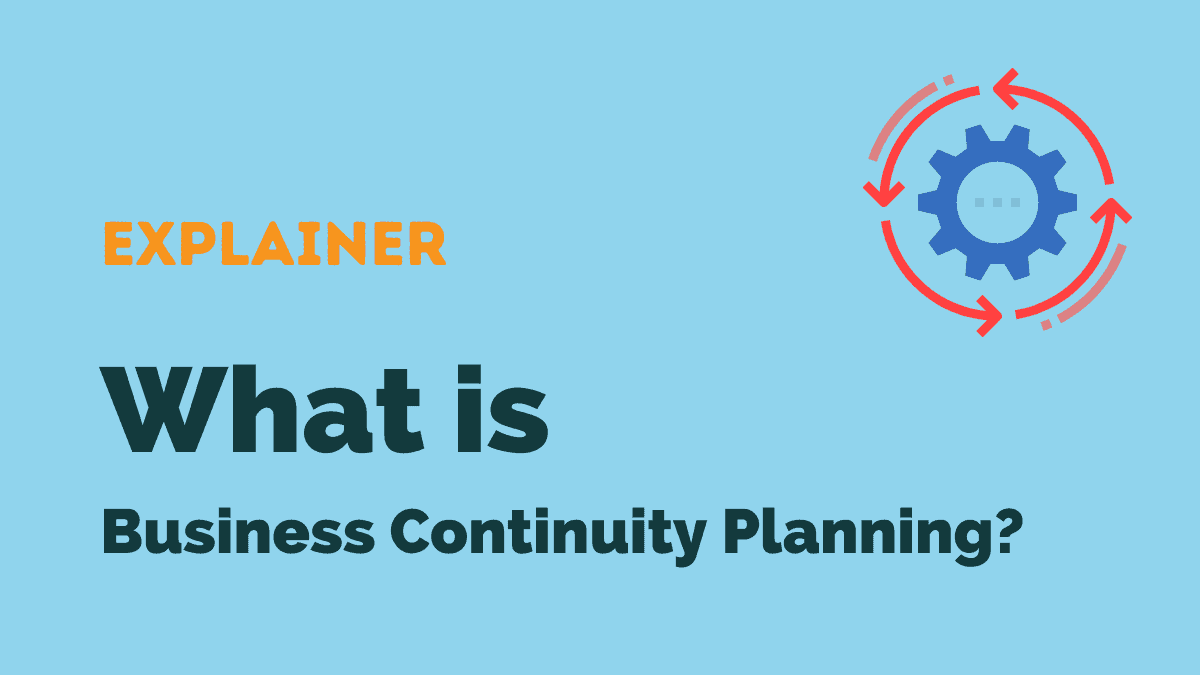Round-the-clock accessibility and data access is a must in modern business, especially in an inbound call center.
Come fire, flood (or even pandemic), every organization needs strategies to efficiently solve customer issues and maintain normal service.
These strategies are called Business Continuity Planning (BCP).
What is Business Continuity Planning anyway?
In brief:
- BCP is a strategy or group of strategies for preventing (or recovering from) major disruption
- A business continuity plan defines interim measures that allow a degree of normal service during an event
- BCPs aim to anticipate the most probable causes of disruption including infrastructure failure, natural disasters and – increasingly – cyber attacks
Business continuity planning, when implemented correctly, provides a seamless experience for end-users and clients.
For organizations that rely on front-facing digital platforms to conduct business, BCP could involve the implementation of a redundant array of inexpensive disks (RAID) for quick access, should another disk break or overheat.
Similarly, BCP could also entail the usage of cloud services or clusters that share server load during stressful times of peak usage.
Here’ s an example:
John Doe owns a holiday-themed online store that discounts heavily at the end of the year.
John Doe, knowing his servers will become flooded by shoppers come December, decides to use cloud services for his business. Since the cloud provides elasticity and scalability by default, John’s BCP standards are taken care of by his platform.
When the servers become overwhelmed by customers, backup nodes within the cloud can serve requests and retrieve data. Since the workload gets distributed throughout various nodes, the chances of a single point of failure (SPOF) diminishes significantly.
The key elements of BCP
#1 Examine your vulnerabilities
There are two things to consider here.
First, what areas of your service are especially vulnerable to failure?
Second, what areas of your service are 100% vital?
This gives you two key areas to focus on.

#2 Devise your plan
As you will need multiple BCPs for different scenarios, you will first need to prioritize scenarios based on their likelihood and possible impact.
- How threatening is the scenario?
- How challenging are the steps required to meet it?
- What level of service do you expect to continue to provide?
- What is the cost of enacting the plan and operating on that footing?
#3 Test your plan
There’s a reason that large buildings are required to have ‘fire drills’.
It’s not only to train the building’s occupants.
It’s also to test the escape routes and make sure that the procedures are fit for purpose.
You’ll need to conduct the same kinds of activities yourself to test BCPs.
#4 Communicate your plan internally
There’s zero value to a plan which isn’t executed well!
That means it needs to be well understood by high-level staff.
However, it doesn’t mean that each person involved needs to understand each step.
Business Recovery Plans are often highly complex; while a few individuals need to have oversight for the entire process, most staff involved need only understand and execute their part.
One Size Does Not Fit All
A proper business continuity plan is a detailed policy that states what a company will do in the event of a major outage or breakdown. However, not all businesses need the same level of redundancy and fault tolerance to remain efficient.
For example, someone who runs a digital art studio online may have basic BCP requirements, whereas global banking institutions spend millions of dollars making sure their products and services are online 24-hours a day, 7-days a week and 365-days a year.
Pros and Cons
A business continuity plan is an essential component of a successful business, but it’s not all sunshine and rainbows.
For up-and-coming entrepreneurs and small business owners, a thorough BCP can be costly. And when you’re struggling to expand your business into the market and make payroll, it’s easy to skip over the intricate details.
Rather than looking at a BCP as “nice to have,” think of it as a “must-have.” If your business went offline and your customers couldn’t do business with you, you would suffer a 100% revenue loss until the error was corrected.
A business continuity plan isn’t just an expense – it’s an insurance policy that covers your back should something go wrong.
More importantly, helping customers and accepting their calls is a critical part of business life.
Without your friendly and helpful staff available around the clock, these people would have nowhere to go. Do them a favor by considering an efficient and budget-friendly BCP for your business.
Who Is BCP For?
BCP is for the individual or business owner who needs to interact with their clients and customers regularly. Whether it’s picking up a phone call and troubleshooting a simple error or making a sale online, having your services up and running is paramount.
More importantly, developing the reputation of being reliable and accountable is something to behold in our modern era. If these values and morals are a critical part of your growing business, BCP is the next logical step to make moving forward.





